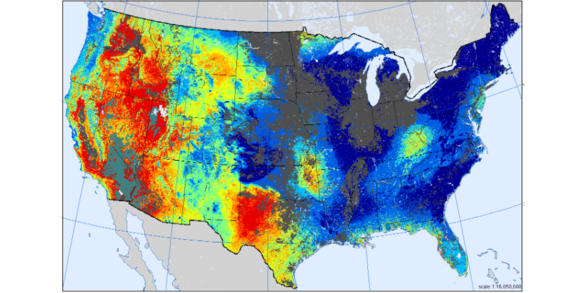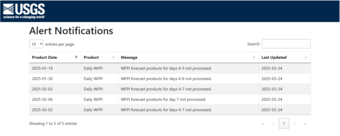Fire Danger Forecast
The Fire Danger Project was developed as a joint project involving USGS EROS and collaborators from the USDA Forest Service. This project combines forecast weather data and satellite observations to develop several products depicting the risk for large fire activity across the conterminous United States. Forecast products are produced up to seven days in advance and are updated daily.
Interactive Viewer
Visualize fire danger products and download areas of interest
Bulk Data
Static Maps
View and download national scale products for specific time periods
Stream Data
Web Services
Access data directly in your GIS or data dashboard utilizing OGC WMS services
Historical Graphs
Regional GACC Plots
View and download regional graphs of current large fire risk in historical context
Data Alerts
Missing Products Notifications
View alerts page for missing products









